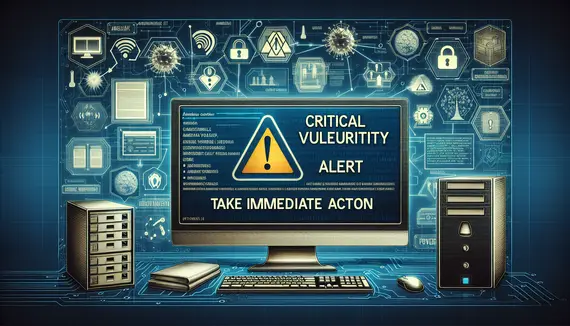
Understanding the Alert
Microsoft has recently highlighted an alarming vulnerability affecting its server software, prompting business and government entities to take immediate action. This notice emphasizes the need for heightened vigilance and fast response from IT departments worldwide. Software vulnerabilities are not new, but the stakes are continually rising as hackers develop more sophisticated methods to exploit these weaknesses. Therefore, this alert serves as a crucial reminder that any delay or oversight could lead to significant consequences.
What Microsoft Uncovered
The vulnerability in question resides within Microsoft's server software, a tool that is foundational for many organizations' daily operations. It's vital to understand that server software acts as the backbone of an organization's IT structure. It handles everything from data management to facilitating user access to necessary programs. When a vulnerability is found in such a fundamental component, it can potentially lead to unauthorized access, data breaches, or disruptions in service.
How does this vulnerability manifest? Hackers could potentially leverage this flaw to gain control of affected servers, bypassing security measures that typically protect sensitive information. This kind of access can allow cybercriminals to extract private data, deploy ransomware, or even shut down operations altogether.
Immediate Steps for Organizations
In light of this threat, Microsoft has urged organizations to take specific steps to mitigate any potential risks. Here, we break down crucial actions that IT departments can undertake to safeguard their systems:
- Patch Management: Ensure all systems are updated with the latest security patches. Microsoft often releases updates to address known vulnerabilities, and applying these promptly can close the window that hackers seek to exploit.
- Server Hardening: Implement further security measures such as configuration adjustments and additional security tools to make unauthorized access more difficult.
- Network Monitoring: Use robust monitoring tools to detect and respond to suspicious activities on the network. Early detection can prevent a small issue from turning into a full-blown incident.
- Incident Response Plan: Have a clear and effective plan in place for responding to security incidents. Regularly update and practice this plan to ensure swift action when needed.
The Broader Implications for Cyber Security
This alert from Microsoft is more than a warning about a single vulnerability; it highlights the ongoing challenges faced by organizations in maintaining secure IT environments. Cyber threats are constantly evolving, and as businesses become more dependent on digital solutions, the potential impact of vulnerabilities becomes even more significant.
For many organizations, this serves as an opportune moment to reassess their broader cybersecurity strategies. Relying solely on reactive measures is no longer sufficient. Proactive approaches, including regular vulnerability assessments and holistic security audits, are essential.
Building a Cyber-Resilient Organization
To create a strong cyber-resilient framework, organizations should focus on the following:
- Employee Training: Cybersecurity is everyone’s responsibility. Regular training sessions can ensure that employees at all levels recognize potential threats and follow best practices for security.
- Access Control: Limit access to sensitive information based on roles within the organization. Ensuring that employees have access only to the data necessary for their job functions can minimize risks.
- Data Backup: Regularly back up data and ensure backups are secure. In the event of a breach, having recent backups can lessen the damage and expedite recovery.
The Role of Government in Cybersecurity
Governments around the world also have a critical role to play in cybersecurity. By establishing stringent regulations and promoting information sharing between public and private sectors, governments can help create a more secure digital ecosystem. Additionally, government agencies should lead by example, ensuring their systems are robust and following best practices in cybersecurity.
Conclusion: A Call to Action
The alert from Microsoft is a stark reminder of the persistent and evolving nature of cyber threats. For organizations globally, it is a clarion call to not only address this specific vulnerability but to bolster their overall security posture. By taking immediate action and adopting comprehensive cybersecurity strategies, businesses and governments can protect themselves against current threats and prepare for those that lay ahead. Staying vigilant, informed, and proactive is key to safeguarding our digital future.









